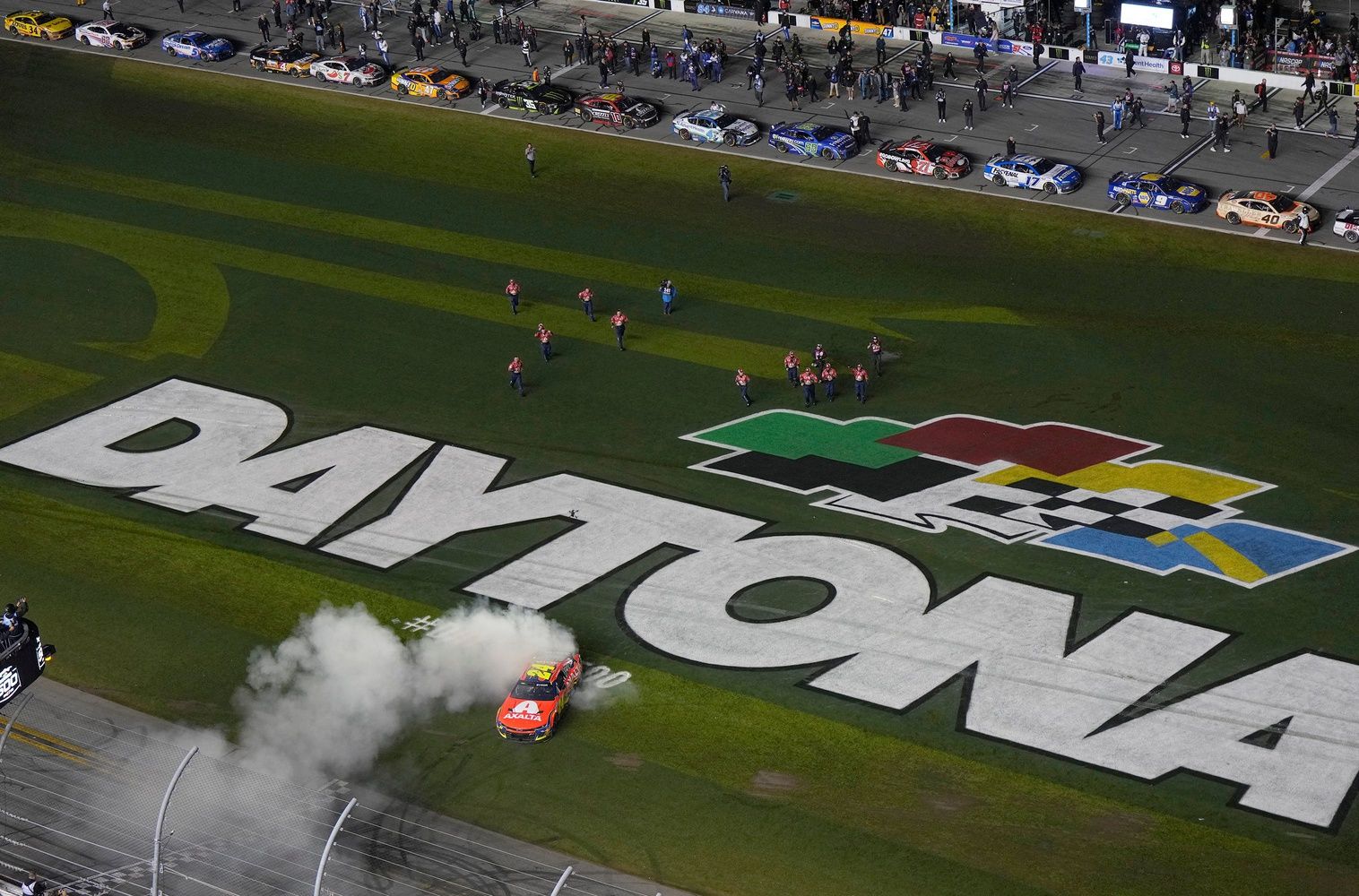Despite Carson Hocevar’s antics on the track, the Ambetter Health 400 in Atlanta was a welcome event for NASCAR fans following the incidents at the Daytona 500. Not only was this year’s event an overall success, but racing at the Atlanta Motor Speedway has become increasingly exciting for fans in recent years, and the likes of Daytona and Talladega are fading in comparison.
Speaking to Bob Pockrass in the press conference following the Cup Series race, winning Crew Chief Adam Stevens provided an insightful breakdown of the latest trend. Per Stevens, it all comes down to the fact that the Atlanta Motor Speedway is shorter in length, and manufacturer allegiances are unable to come into play.
Why the NASCAR’s Crown Jewel Races Are Fading in Comparison to Atlanta
With a 2.5-mile primary tri-oval, the Daytona International Speedway is one of the longest race tracks on the NASCAR calendar. Given its length, all the teams are forced to run fuel-efficient races for the most part so that they can make green flag stops.
According to Stevens, the current regulations make drivers look like a “bunch of buffoons” who are running around in circles. While he wishes something could be done about this, Christopher Bell’s Crew Chief added that a shorter track like Atlanta makes for more aggressive approaches by the teams.
With shorter stage lengths, drivers are able to race harder on the same amount of fuel, which leads to a more open field.
Winning crew chief Adam Stevens gave what I felt was a pretty good breakdown to @bobpockrass of why the racing at Atlanta is so good compared to what Daytona/Talladega have morphed into.
Stevens says that the length of runs outside the fuel window leads to everyone saving fuel… pic.twitter.com/mmrpBllBMP
— Steven Taranto (@STaranto92) February 24, 2025
Additionally, the shorter track length means there are “not a lot of places to hide” for teams and their drivers. A manufacturer does not need seven or eight cars in the lead pack to be fast on the track.
The same notion removes manufacturer allegiances, which can often change the outcome of a race. With the shorter races not being “pack-style” events, the whole field becomes one big pack. Owing to this, it becomes difficult for some drivers to break off, form a smaller pack, and try to win as a group.

